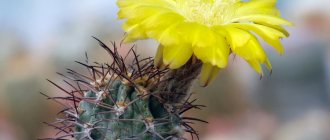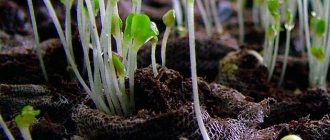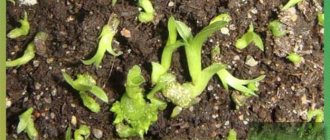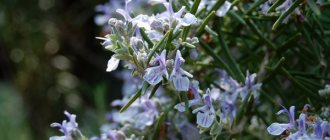Author: Elena N. https://floristics.info/ru/index.php?option=com_contact&view=contact&id=19 Category: Garden plants Published: January 19, 2019Last edits: January 20, 2021
- When to plant
- Growing conditions
- How and when to collect seeds
- Lavatera trimestris
The beautiful lavatera is considered a plant for the lazy - it is so undemanding in terms of conditions and care. At the same time, the decorative qualities of lavatera are beyond praise. Thanks to the work of breeders, this plant today is represented in culture by many varieties. In addition to its attractiveness, lavatera also has healing properties: it relieves headaches, coughs and other cold symptoms.
Our article will introduce you to the types and varieties of this plant. From it you can also learn:
- how to grow lavatera and seeds;
- how to care for the plant during the season;
- how to collect lavatera seeds;
- how to prepare perennial plant varieties for wintering.
Planting and caring for lavatera
- Planting: sowing seeds in the ground - at the end of April or early May: sowing seeds for seedlings - in early March, planting seedlings in the ground - from mid to late May.
- Lighting: bright sunlight.
- Soil: loose, light, well-drained, not too fertile.
- Watering: moderate, but in drought - regular and plentiful.
- Garter: tall varieties need to be tied to supports that are installed during planting.
- Fertilizing: only when grown in very poor soils, once every 4-8 weeks with complex mineral fertilizer.
- Reproduction: seed.
- Pests: aphids.
- Diseases: rust.
Read more about growing lavatera below.
flowers (lat. Lavatera) , or hatma , or wild rose , belong to the genus of trees, shrubs and herbs of the Malvaceae family. The genus is small, with only about 25 species, growing mostly in Australia, East Asia and the Mediterranean. The Lavater plant received its name in honor of the Lavater brothers, famous naturalists and doctors from Switzerland in the 17th century. The plant has been known in garden culture since the 16th century, but it became a trend about twenty years ago - these tall beauties with bright and delicate flowers did not grow in a rare yard at that time. Lavatera is as popular in the garden today as it was two decades ago.
Lavatera in landscape design
For exquisite compositions in the garden, the culture is rustic. But it looks great in country landscapes.
In company with lavatera, delphiniums, sage, irises, and verbenas beautifully coexist in the flowerbed.
Any low-growing and medium-growing flowering plants, such as ageratums and petunias, go well together due to the variety of color shades. Perennial lavatera is no less effective in mono-beds. Compared to other plants in the garden, this graceful beauty will stand out in size and bright colors, creating an attractive picture.
In a large space, you can create a beautiful “living” landscape composition from different species and varieties. For border planting along walls or along the edge of a plot, it is better to choose specimens of the same height, and for flower beds to use “stepped” cultivation - plant taller ones in the center. With proper selection of shades, the flower garden will delight the eye with a riot of colors all summer long. Photo lavaters, advice from designers and flower growers will help you find interesting ideas and choose varieties.
Botanical description
Thanks to the ongoing work of breeders, today among the representatives of the Lavater genus there are many annual and perennial herbaceous plants, reaching a height of 50 to 150 cm, with a well-developed root system, powerful crown and strong branches. The leaves of most species are lobed, covered with hairs and arranged in an alternate order. The flowers are large - up to 10 cm in diameter, yellow, white, crimson, purple or pink, growing singly or in several pieces from the axils of the bracts and forming spicate or racemose terminal inflorescences, bloom in early summer and bloom until mid-autumn.
- Erythronium (kandyk): growing and care in the garden
They say that the lavatera flower is a plant for the lazy or for those who never have time, and to some extent this statement is true - the lavatera is unpretentious in care, undemanding to the soil, drought-resistant and not afraid of strong winds. Lavatera flowers look fresh when cut for more than a week.
Reproduction
Lavatera is propagated by seeds, which have a high germination rate, which makes it possible not to spend much on purchasing planting material.
Seeds are collected from the plant after the seed capsule that appears in the place of the former flower acquires a brown tint, and the seeds are clearly scattered inside.
Storing the seed in a dry place will allow them to be used for 5 years. But you can easily collect a lot of fresh seeds every year, distributing them to everyone who wants to decorate their plot with an avalanche of greenery and flowers.
The lovely and constantly blooming lavatera will ideally arrange any area, growing in one summer into tall fluffy bushes and requiring absolutely no attention.
Growing lavatera from seeds
How to sow seeds
Lavatera flowers are planted in open ground in regions with warm climates in late April or early May. Before planting lavatera, add a bucket of compost or humus and 2 tablespoons of nitrophoska per square meter into the soil for digging. Then the soil is leveled, furrows 1 cm deep are made in it, they are spilled with warm water and dry lavatera seeds are sown, and then they are sprinkled on top with a mixture of garden soil and humus in equal proportions, they are sealed and the sowing is immediately covered with a transparent film.
Lavatera from seeds usually germinates within a week, and when the seedlings reach 5 cm in height, the cover is removed, the seedlings are thinned out and the area is loosened with light hilling. If you did not have the opportunity to add fertilizer to the garden soil before sowing the seeds, the first fertilizing in the form of a complex mineral fertilizer is applied after removing the covering material.
Seedling care
To achieve the earliest possible flowering, there is a seedling method for growing lavatera. When to sow lavatera? If you plan to plant seedlings in open ground in May, lavatera seedlings are planted in early March. Before sowing lavatera, you need to place drainage on the bottom of the seedling boxes, and on top - soil for seedlings purchased at a flower shop. Then you need to water the soil with warm water and, having buried the dry seeds literally one centimeter into it, cover the crops with glass or film and place them in a bright place. Remove condensation from the glass and moisten the soil as needed.
In two weeks, seedlings will appear, which may need additional lighting for successful growth - with insufficient lighting, the seedlings become too elongated and thin. As soon as the seeds germinate, the glass can be removed. Caring for lavatera before transplanting it into open ground will consist of periodically moistening the soil and turning the container with seedlings around its axis to achieve uniform development of seedlings.
Picking seedlings
Growing lavatera flowers by seed does not involve picking seedlings - grown and strengthened seedlings are immediately planted in open ground.
- How to properly plant hydrangea in open ground
When to sow Lavatera for seedlings according to the lunar calendar?
How luxuriantly Lavatera gramophones will grow in a personal plot depends on the sowing date. The development of the plant is influenced by the phases of the moon, so the calendar of lunar cycles will tell you when to sow lavatera seedlings.
Sowing all flowers, with rare exceptions, is better during the waxing moon
Seeds sown on the full moon will not produce strong seedlings, and may not sprout at all. The same will happen to seeds sown on the new moon.
Favorable days for sowing
Every month has days that are productive for gardening. It is recommended to sow Lavatera:
- March: 1-7, 26-27, 29-31;
- April: 1-6, 25-30;
- May: 1-3, 5, 24-25, 27-31.
Planting on these dates will give excellent results.
Bad days
There will be no beautiful lush flowering from seedlings sown:
- March: 9, 24;
- April: 8, 23;
- May: 7, 22.
Planting lavatera
When to plant
Lavatera is planted in the ground when the threat of frost has passed - from the end of April in areas with a warm climate and at the end of May in areas with cooler conditions. For lavatera, a sunny place with light, loose, well-drained soil is preferable. If you are planning to plant a tall lavatera variety, you will need to immediately install supports for the stems.
How to plant
To plant lavatera, use a 20x25 pattern - this distance between seedlings and rows will be enough so that the plants look compact when fully developed.
How to care for seedlings
When using a growth stimulator, lavatera seedlings appear within 5-8 days. Without stimulation, this occurs no earlier than after 10 days.
As soon as the first shoots appear, the containers are moved to a place with good lighting, but the shelter is left. It is removed after a few days, when the seedlings reach a height of about 5 cm. Then they are fed with complex mineral fertilizer.
To avoid stretching of seedlings, install lighting
Regularly, every 3-4 days, the seedlings are turned and placed with different sides facing the sun so that the lavatera develops evenly.
It is not recommended to water the plantings. They are sprayed when the top layer of soil dries.
Lavatera care
Growing conditions
Lavatera care consists of watering the plant as needed. Lavatera is a drought-resistant plant, but it still needs to drink - in dry times, once a week at the rate of 2-3 buckets per large bush, and if the summer is not too hot, then less often.
Secure large, spreading bushes to supports to prevent them from looking untidy. The soil near tall plants can only be loosened until the plants reach a meter in height, because the superficial root system of the plants can be damaged. Promptly remove wilted flowers, which become limp after rain, turning into a slimy mass that leaves burns on the leaves.
As for fertilizers for lavatera, the first time it is fed as soon as it gets stronger after planting, with a solution of a tablespoon of nitrophoska and a tablespoon of urea in 10 liters of water, but this is only if you did not fertilize the soil before planting. If you dug up soil with fertilizers, then you can skip the first fertilizing. The second time you will need to apply fertilizer is at the very beginning of the bud formation process. Ingredients: one tablespoon of sodium sulfate and potassium sulfate per 10 liters of water - this is the norm for one large bush.
That, perhaps, is all the trouble with lavatera.
Pests and diseases
As you have already seen, planting and caring for lavatera can be done even by a beginner. The fight against pests and diseases will not exhaust you, since Lavatera is affected by both extremely rarely. Sometimes there is an invasion of a garden plot by aphids, and then the lavatera also gets it. You can get rid of this problem by treating plants with systemic drugs Aktara, rust, or combined action drugs with rust or rust.
- The most beautiful shrubs for a summer cottage
Lavatera sometimes suffers from rust infection, which appears as brown, brown or yellow spots on the underside of the leaves. It is necessary to remove all parts affected by the disease, and treat the plants with Bordeaux mixture, Kuproxate or Topaz. It is better to remove severely rusted specimens from the area and burn them.
Pests and diseases
The plant is resistant to many diseases. Lavatera is damaged by aphids or gets rust.
- When attacked by aphids, insecticides such as Actellik or Akarion are used. These drugs will also help drive away other insect pests.
- Rust infection: trimming infected parts and leaves covered with a brown coating will help stop the fungus. The bush is sprayed with Bordeaux mixture, Topaz or another similar antifungal agent. Plants affected by rust by 70% or more are urgently uprooted and burned.
Leaf rust
Lavatera after flowering
How and when to collect seeds
After the lavatera flowers wither and fall off, green boxes with seeds are found in their place, which need to be allowed to ripen. An indicator of seed maturity is a dried capsule that has changed color from green to brown. Open one of them: if the seeds are gray-brown and easily fall out of the box, you can start collecting them. This usually happens in early autumn. The pods are carefully cut off, the seeds are poured out of them onto paper, which are dried in a dry, ventilated room on newspaper, and then stored in a paper bag or linen bag.
Annual lavatera in winter
One-year-old lavatera must be disposed of, and the area under it must be dug up. Keep in mind that lavatera reproduces by self-seeding, and next spring a flowerbed may form in this place without your participation.
Wintering of perennial lavatera
Perennial lavatera overwinters in the ground. You need to bend its stems as low as possible to the ground, secure them in this position and cover them with dry leaves, spruce branches or covering material.
What do lavatera seeds look like?
When the flower has completely faded, a green box appears in its place. The photo shows what lavatera seeds look like. You need to wait until the box is completely dry. It will take on a brown tint. You can determine that the seeds are suitable for collection as follows:
- cut off the box;
- open it over a sheet of white paper.
You can start collecting seeds if the seeds easily leave their shelter.
The ripened seed material has a brownish-gray color and a fan-shaped shape. Seeds for planting and growing seedlings need to be prepared. They should be poured onto paper and left in a well-ventilated area until completely dry. Store the seeds in a cloth or paper bag.
Types and varieties
Three types of lavatera are grown in culture: annual lavatera, which is represented by the three-month-old lavatera species, perennial lavatera, represented by Thuringian lavatera, and biennial lavatera, the only representative of which is tree-like lavatera.
Lavatera trimestris
Annual up to 120 cm high. The lower leaves are heart-shaped or rounded with teeth along the edges, the upper leaves are three- or five-lobed. The flowers are solitary, funnel-shaped, up to 10 cm in diameter, growing from the axils of the leaves. The closer to the top of the plant, the denser the flowers grow and the shorter the flower stalks. The five-lobed corolla is carmine, white or pink. Cultivated since 1620. It blooms very profusely from July. Varieties:
- Silver Cap - pink lavatera with burgundy veins and a silvery tint, up to 70 cm high;
- Mont Blanc - white flowers with dark veins 60 cm high;
- lavatera Ruby Queen - a variety with powerful, branched stems up to one meter high and with flowers of a rich carmine color;
- Lavatera Beauty - a powerful bush with large sparkling inflorescences of white, carmine or pink;
- Lavatera Sun Goddess is a blend of tall lavatera seeds. The height of the bush is 110 cm, beautiful dark green leaves, flower diameter is 6 cm. Lavatera The sun goddess is represented by a wide palette of colors;
- Novella is a pink, low-growing lavatera up to 20 cm high, which can be grown in containers, but in the garden it grows to a more substantial size;
- White Sherub is a low-growing variety up to 35 cm tall with large white flowers. Suitable for growing in containers and pots.
Lavatera thuringiaca, or Dog rose (Lavatera thuringiaca)
A powerful branched perennial up to two meters high with heart-shaped and rounded, hard-pubescent leaves of gray-green color. The lower leaves are lobed, the upper leaves are entire. Single pink flowers up to 10 cm in diameter appear on long stalks from the leaf axils. Varieties:
- Lilac Lady – lilac lavatera;
- Ai Catcher - lavatera with deep pink flowers;
- Burgundy Vine - pink flowers with dark purple veins;
- Barnsley Baby - a variety with delicate white and pink flowers;
- Bregon Springs is a tall, luxurious variety up to 130 cm in height with powerful, highly branched bushes with dense three-lobed leaves of gray-green color. Blooms profusely and for a long time with pink-purple flowers with crimson veins. Drought-resistant, winters under light cover.
Lavatera arborea
A two-year-old lavatera with a straight, slender stem up to two meters high, oval leaves up to 20 cm long. The reddish-purple flowers with darker veins are similar to hibiscus flowers, and the spherical fruits that form in their place after flowering look like heads of cheese. Blooms from early June to mid-September. There are variegated forms. Varieties:
- Rosea - lavatera with showy pink flowers;
- Candy Floss is a light pink Lavatera.
Lavatera maritime (Lavatera maritime, or Lavatera bicolor)
Another type of lavatera grows in warm regions - lavatera maritima. It received its second name for the two-tone color of the flowers - two shades of lilac. The seaside lavatera reaches a height of one and a half meters.
Cretan Lavatera (Lavatera cretica)
It is also possible to grow Lavatera Cretan in our climate, a herbaceous plant up to 1.8 m high with erect, branched tomentose-pubescent stems, the same fleecy round five-lobed or seven-lobed leaves up to 20 cm in length, with a heart-shaped base and a blunt apex and with small teeth along the edge. Its flowers are up to 3.5 cm in diameter, purple or lilac in color, collected in groups of 2-8 in the leaf axils.
Lavatera mauritanica
In the warmest regions of our country, you can also grow Moorish lavatera, a low plant up to 80 cm in height. Its stems are tomentose-pubescent, erect, branched, the leaves are round, lobed, with a pointed tip. The flowers are purple and up to 3 cm in diameter.
Lavatera is interesting not only for its decorative qualities, but also for its healing properties: preparations containing it are used in the treatment of coughs, colds, headaches, intestinal disorders, aches in the joints and muscles, gastritis and gynecological diseases. Fresh leaves of Thuringian Lavatera are effective in treating non-healing wounds, lichen, boils and other purulent formations.











